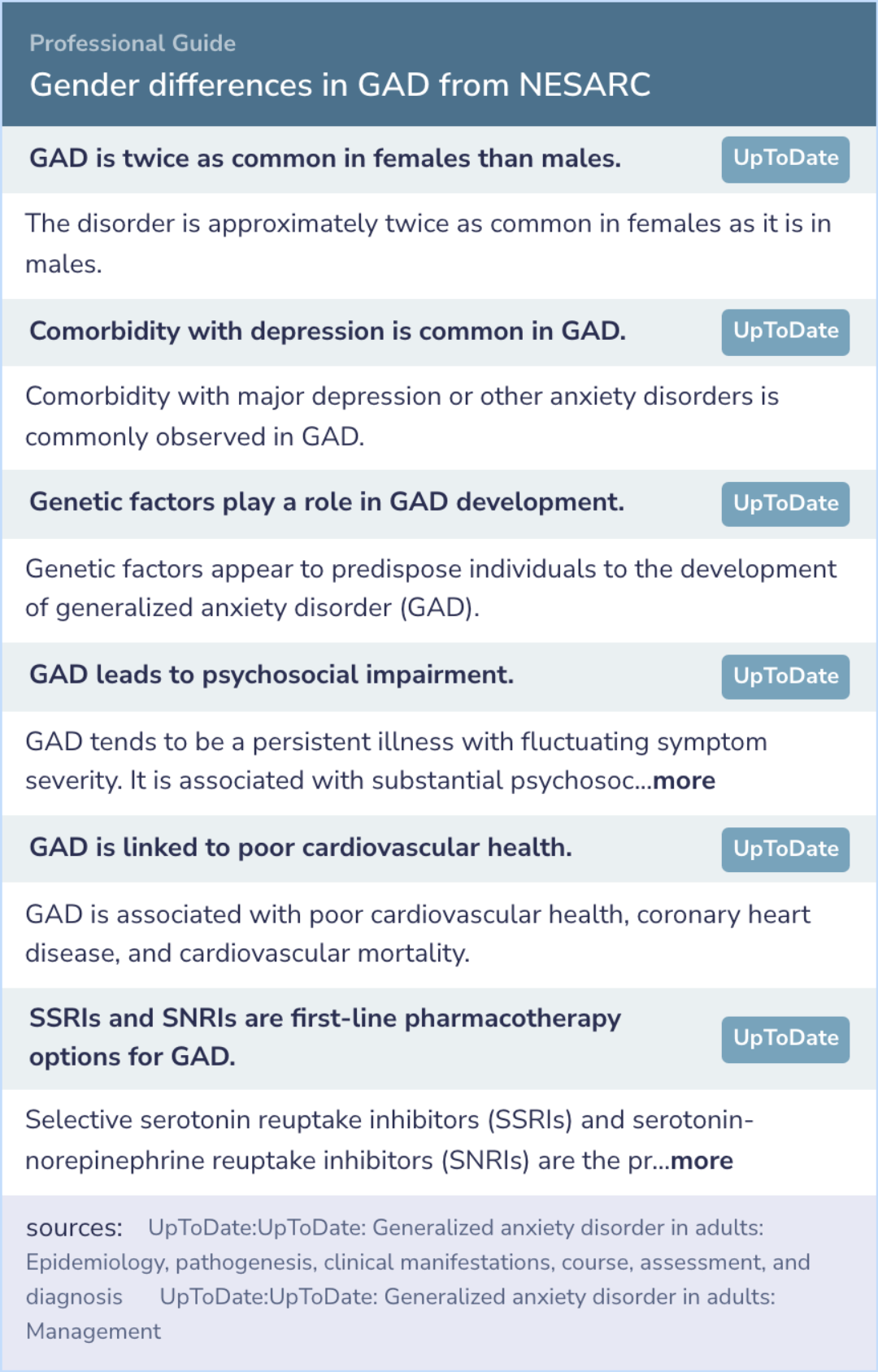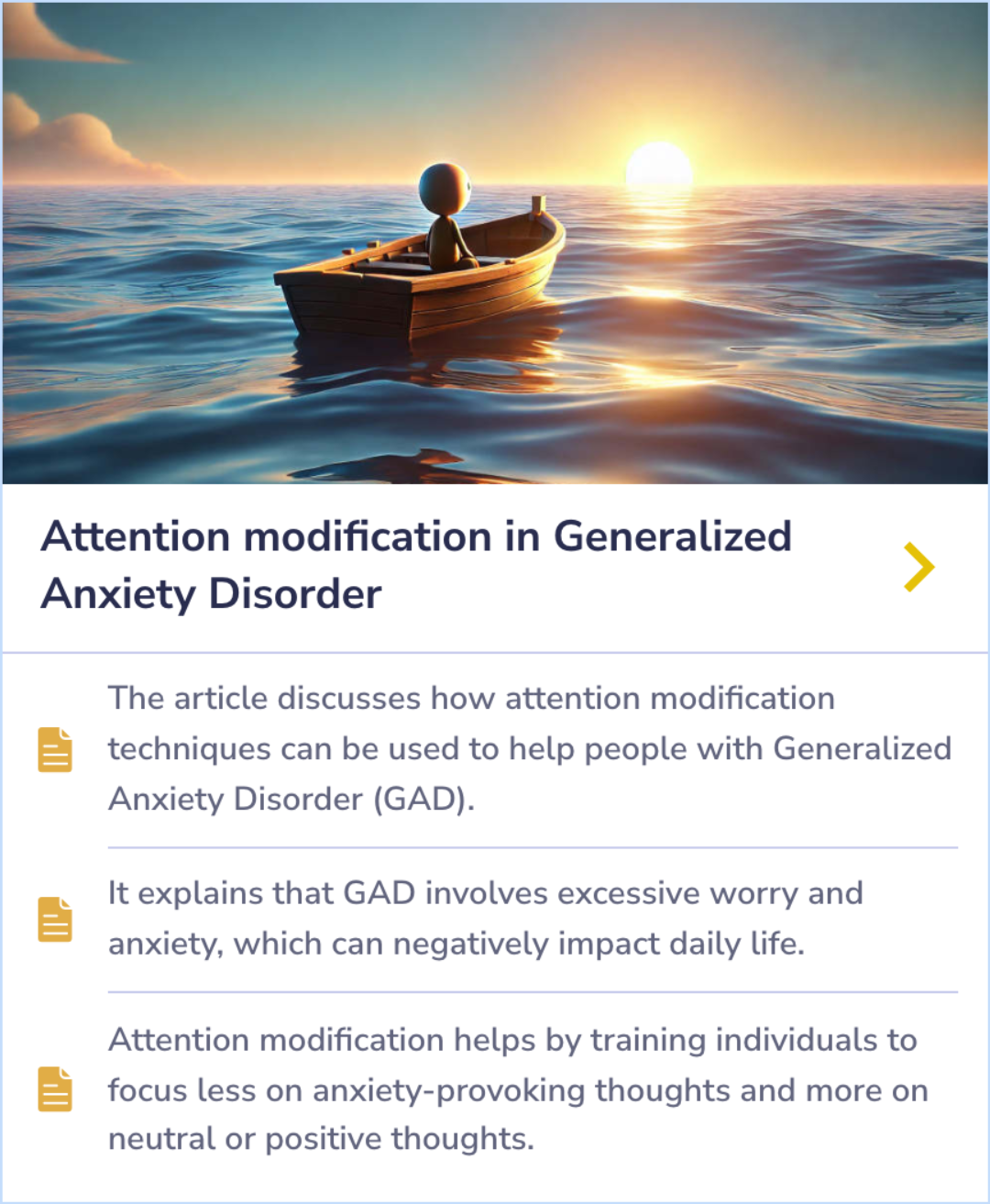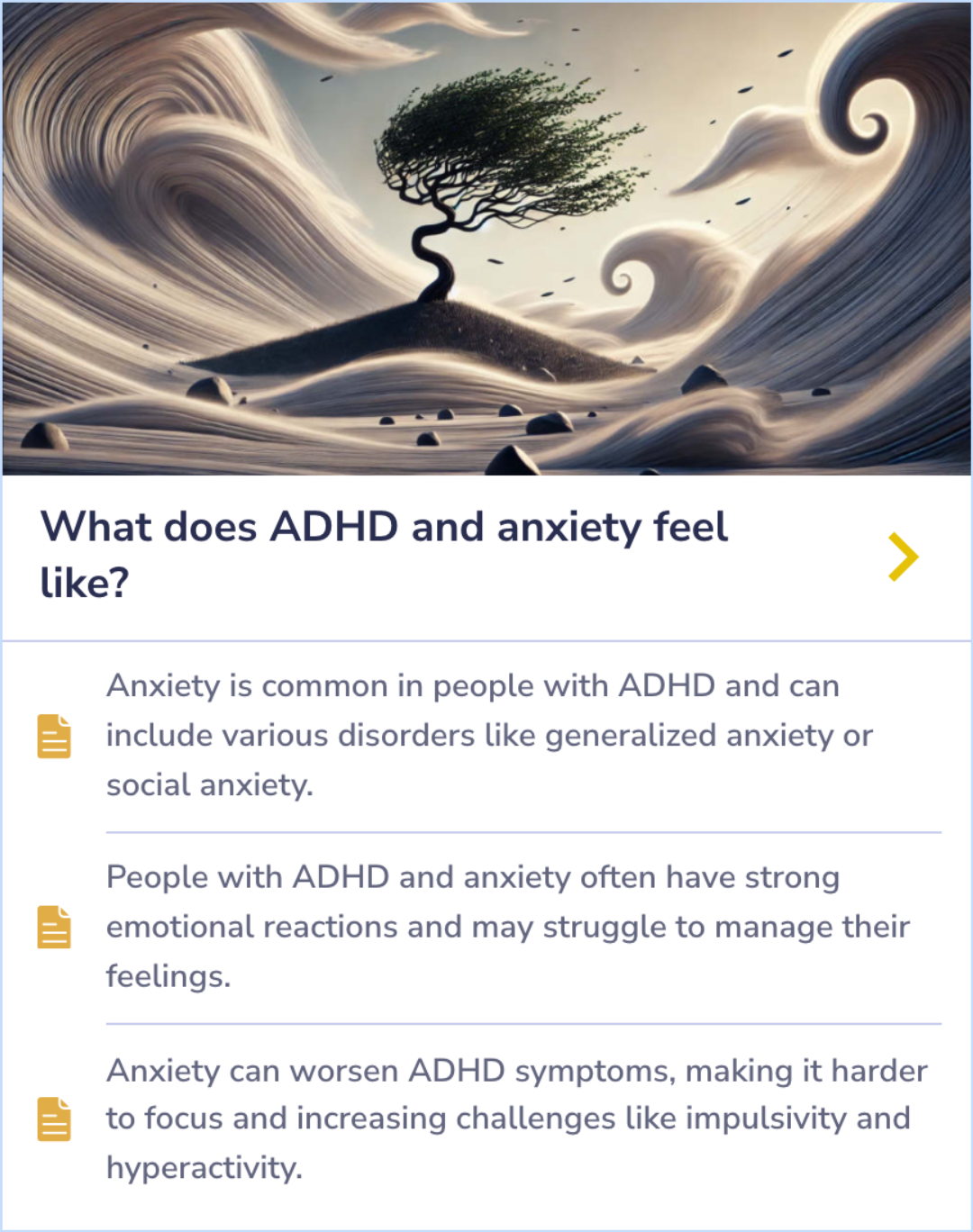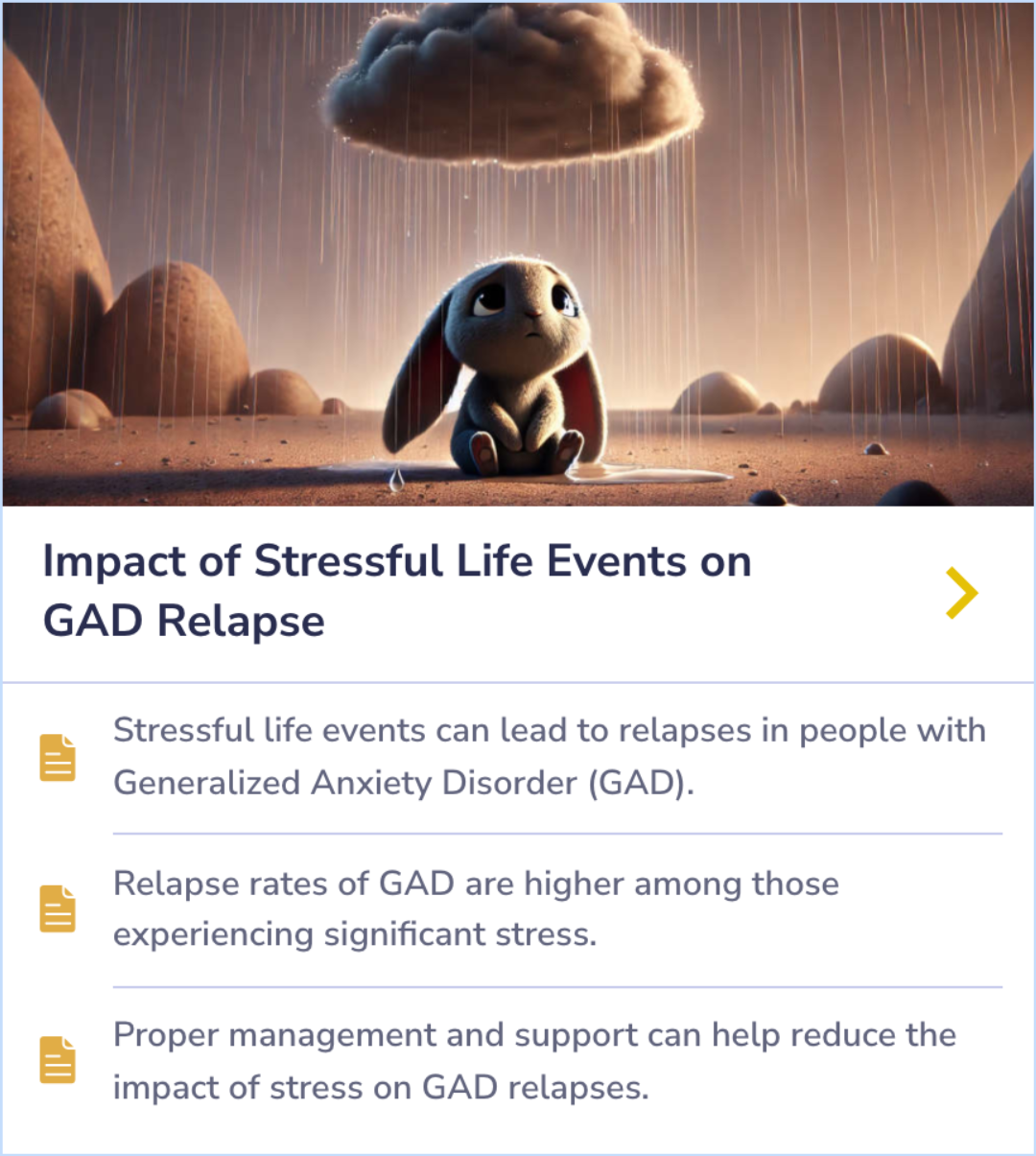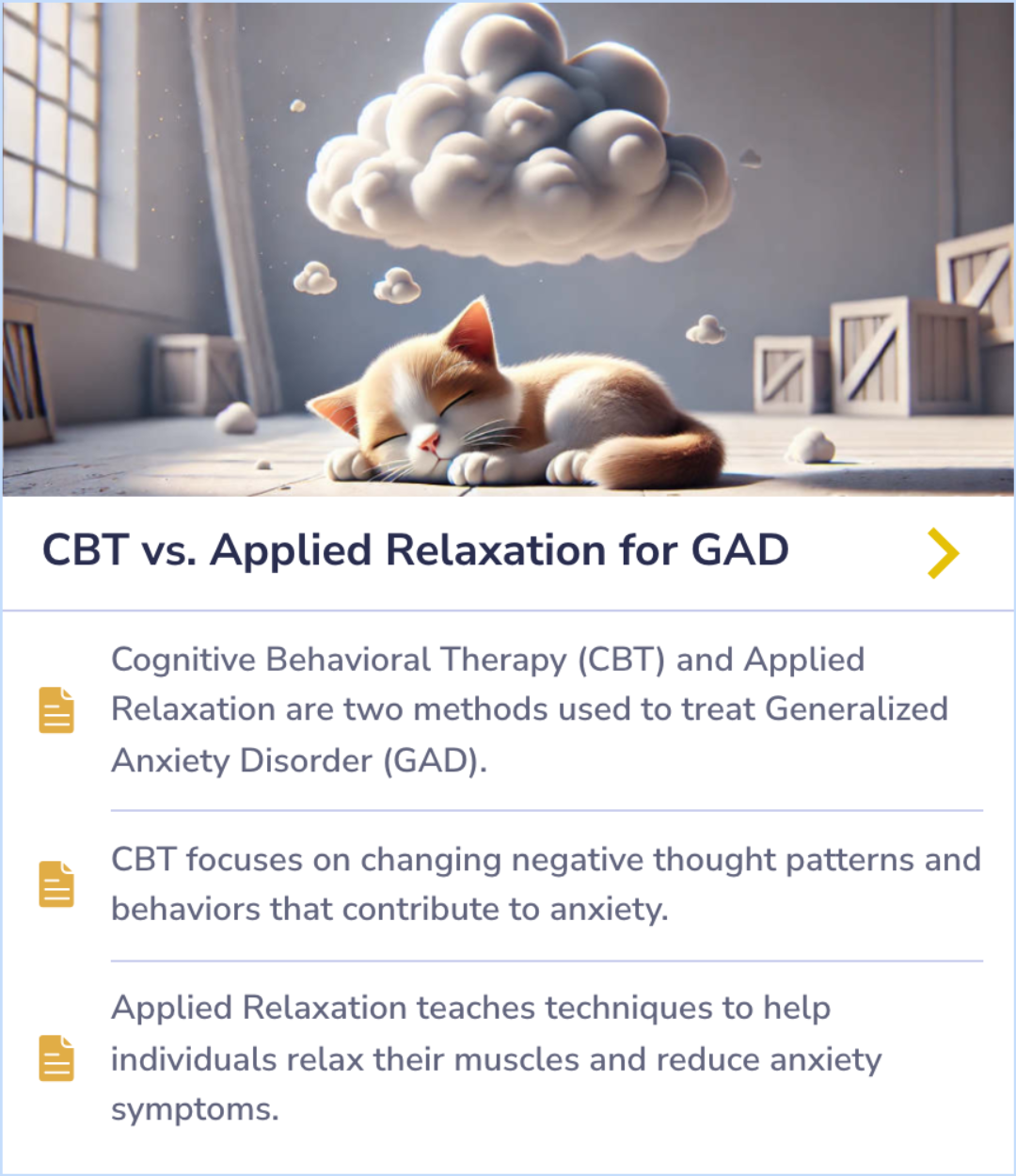Generalized Anxiety Disorder Papers
Visual Abstract
Gender differences in generalized anxiety disorder: results from the National Epidemiologic Survey on Alcohol and Related Conditions (NESARC)
Gender differences in GAD from NESARC
November 25, 2024
author
Vesga-López O, Schneier FR, Wang S, Heimberg RG, Liu SM, Hasin DS, Blanco C
journal
J Clin Psychiatry
Date Published
2008 Oct
Why link to a visual abstract?
What is a visual abstract?
Original
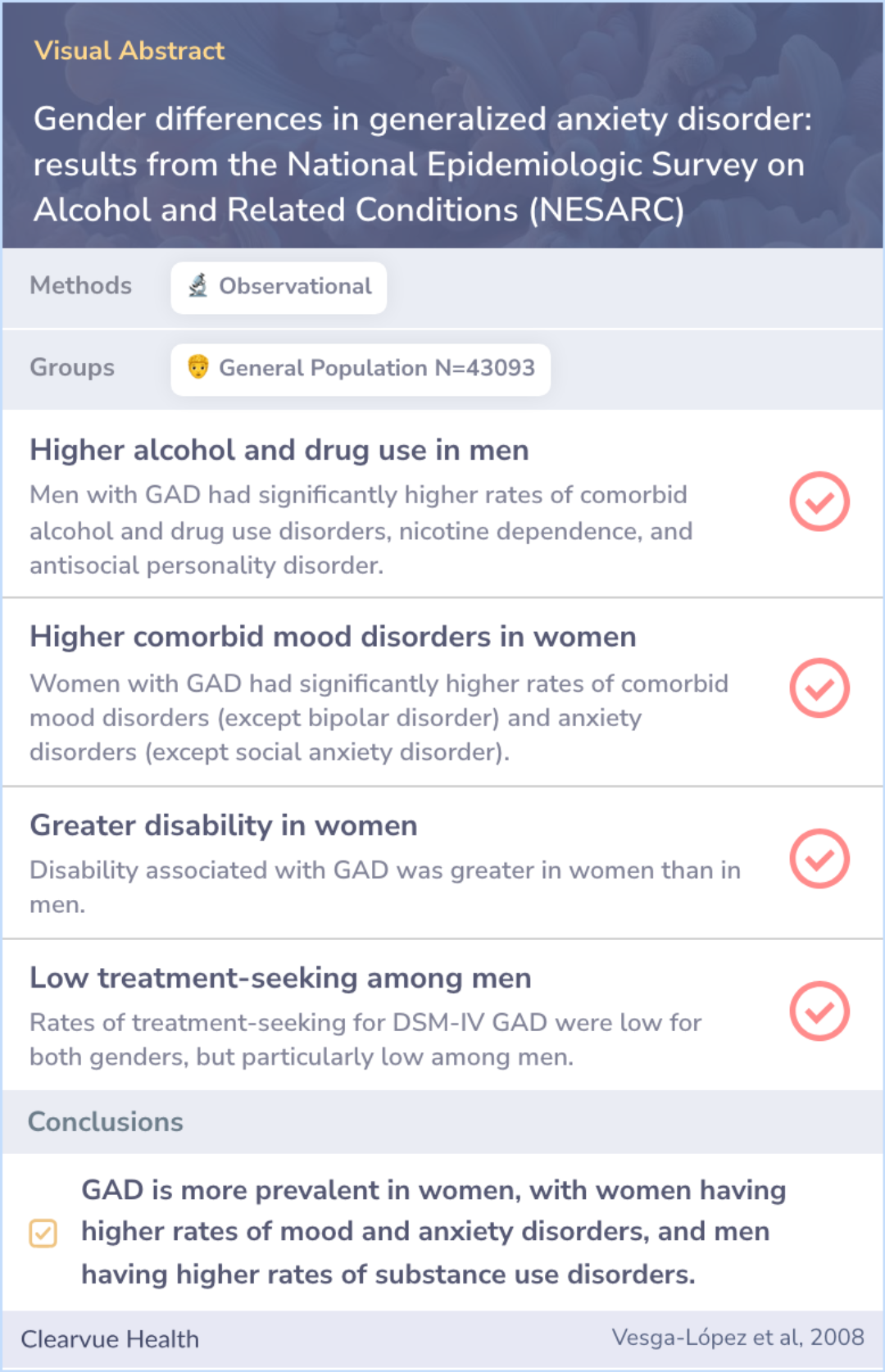
Study Summary
🔬
What They Studied
They studied gender differences in the epidemiology, comorbidity, and treatment-seeking patterns of Generalized Anxiety Disorder (GAD) in the U.S.
💡
What They Found
They found that GAD is more prevalent in women, who also have higher rates of comorbid mood and anxiety disorders, while men have higher rates of comorbid alcohol, drug use disorders, and antisocial personality disorder.
📚
What This Means
These findings suggest women with GAD are more likely to have mood and anxiety disorders, aligning with current evidence which notes GAD often coexists with depression. Men with GAD demonstrated higher substance use, highlighting a discrepancy in treatment-seeking behavior between genders.
Study Summary
Study Overview
This study aimed to explore how men and women experience Generalized Anxiety Disorder (GAD) differently, focusing on factors like comorbidity and symptom expression. It found that women often have more mood-related issues, while men show higher rates of substance use. These differences matter for how treatment should be approached and organized in mental health services.
By understanding these distinctions, we can better tailor interventions that address the unique needs of each gender.
By understanding these distinctions, we can better tailor interventions that address the unique needs of each gender.
Abstract: background
To assess gender differences in the epidemiology, comorbidity and treatment-seeking patterns of DSM-IV Generalized Anxiety Disorder (GAD) in the United States.

Clinical Implications of Gender Differences
"From the clinical point of view, gender-specific demographic characteristics, comorbidity, symptom presentation, and severity can help alert clinicians about the different presentations of the disorder, influence selection of target behaviors and the sequence of interventions, and address gender-specific issues related to the delivery of mental health services."
Etiological Factors of GAD
"Gender differences in the phenomenology of GAD may be the result of core etiological mechanisms (e.g., genetic factors) that are expressed differently due to environmental, cultural, sex-role orientation, or biological differences."
Understanding Anxiety Expression
"Our study suggests that men might tend to express their anxiety more often than women through externalizing behaviors."
Study Summary
Methods
The research utilized data from the 2001-2002 National Epidemiologic Survey on Alcohol and Related Conditions (NESARC). This survey included a large, representative sample of 43,093 adults from the U.S. population.
The study analyzed this data to study the epidemiology, co-occurring disorders, and treatment-seeking behaviors among those diagnosed with DSM-IV Generalized Anxiety Disorder (GAD).
The study analyzed this data to study the epidemiology, co-occurring disorders, and treatment-seeking behaviors among those diagnosed with DSM-IV Generalized Anxiety Disorder (GAD).
Abstract: methods
Data were derived from the 2001–2002 National Epidemiologic Survey on Alcohol and Related Conditions (NESARC), a large cross-sectional survey of a representative sample (N=43,093) of the U.S. population.

Study Summary
Results
The findings revealed that women were nearly twice as likely to have GAD compared to men. Men with GAD showed higher rates of alcohol, drug use, and antisocial personality disorder. Women, on the other hand, had more mood and anxiety disorders related to GAD.
Men tended to use alcohol and non-prescription medications to cope with GAD more than women. Women with GAD had a stronger family history of depression and greater associated disability. Treatment-seeking rates were low for both genders, particularly among men.
Men tended to use alcohol and non-prescription medications to cope with GAD more than women. Women with GAD had a stronger family history of depression and greater associated disability. Treatment-seeking rates were low for both genders, particularly among men.
Abstract: results
The lifetime and twelve-month male:female prevalence ratios of DSM-IV GAD were 1:1.9 and 1:2.2, respectively. Men with GAD had significantly higher rates of comorbid alcohol and drug use disorders, nicotine dependence, and antisocial personality diso...more
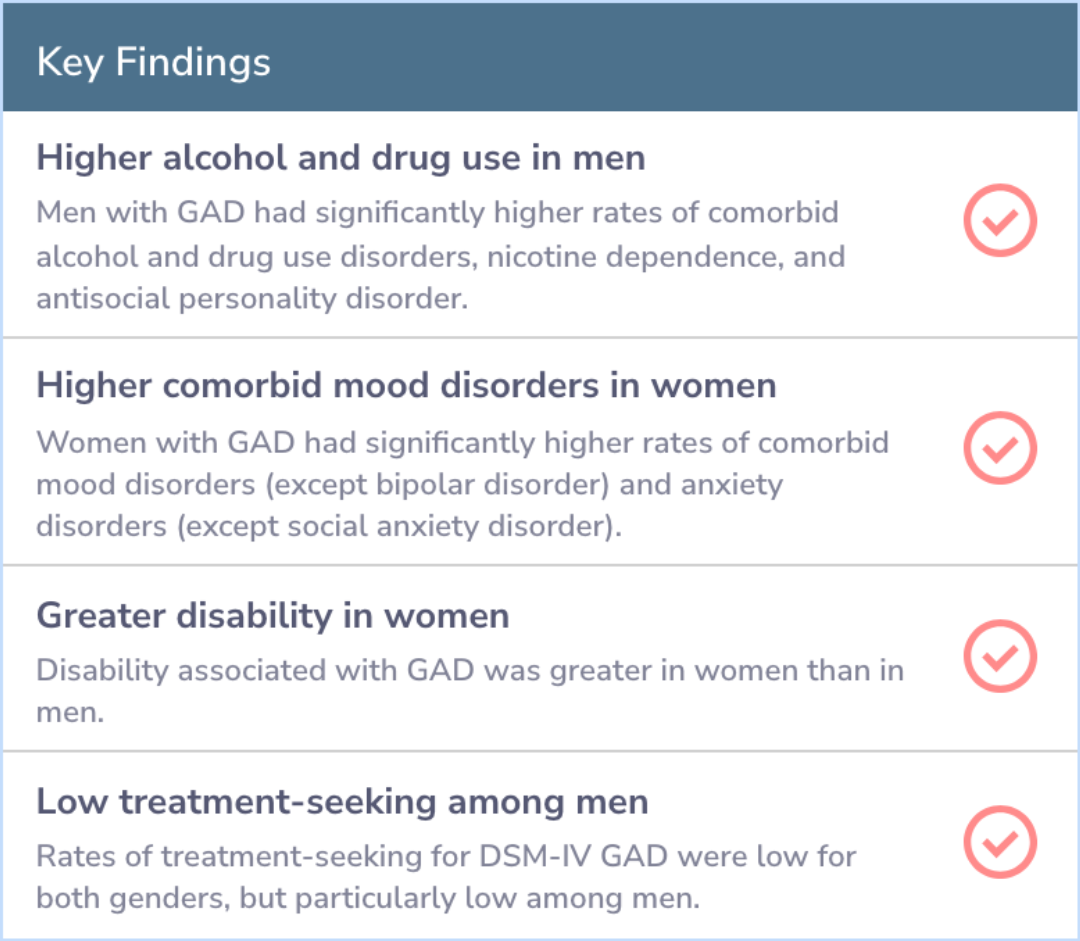
Study Summary
Conclusions
Significant gender differences exist in the prevalence and associated health conditions related to GAD. The study found varied sociodemographic and clinical correlations, course, and patterns in seeking treatment between men and women.
Improved recognition and treatment of GAD, especially among men, could significantly reduce both the societal and personal burden of the disorder, enhancing the quality of life for those affected.
Improved recognition and treatment of GAD, especially among men, could significantly reduce both the societal and personal burden of the disorder, enhancing the quality of life for those affected.
Abstract: conclusions
There are significant gender differences in the prevalence, comorbidity pattern, sociodemographic and clinical correlates, course, and treatment-seeking rates of persons with DSM-IV GAD. Increased recognition and treatment of GAD, particularly among ...more
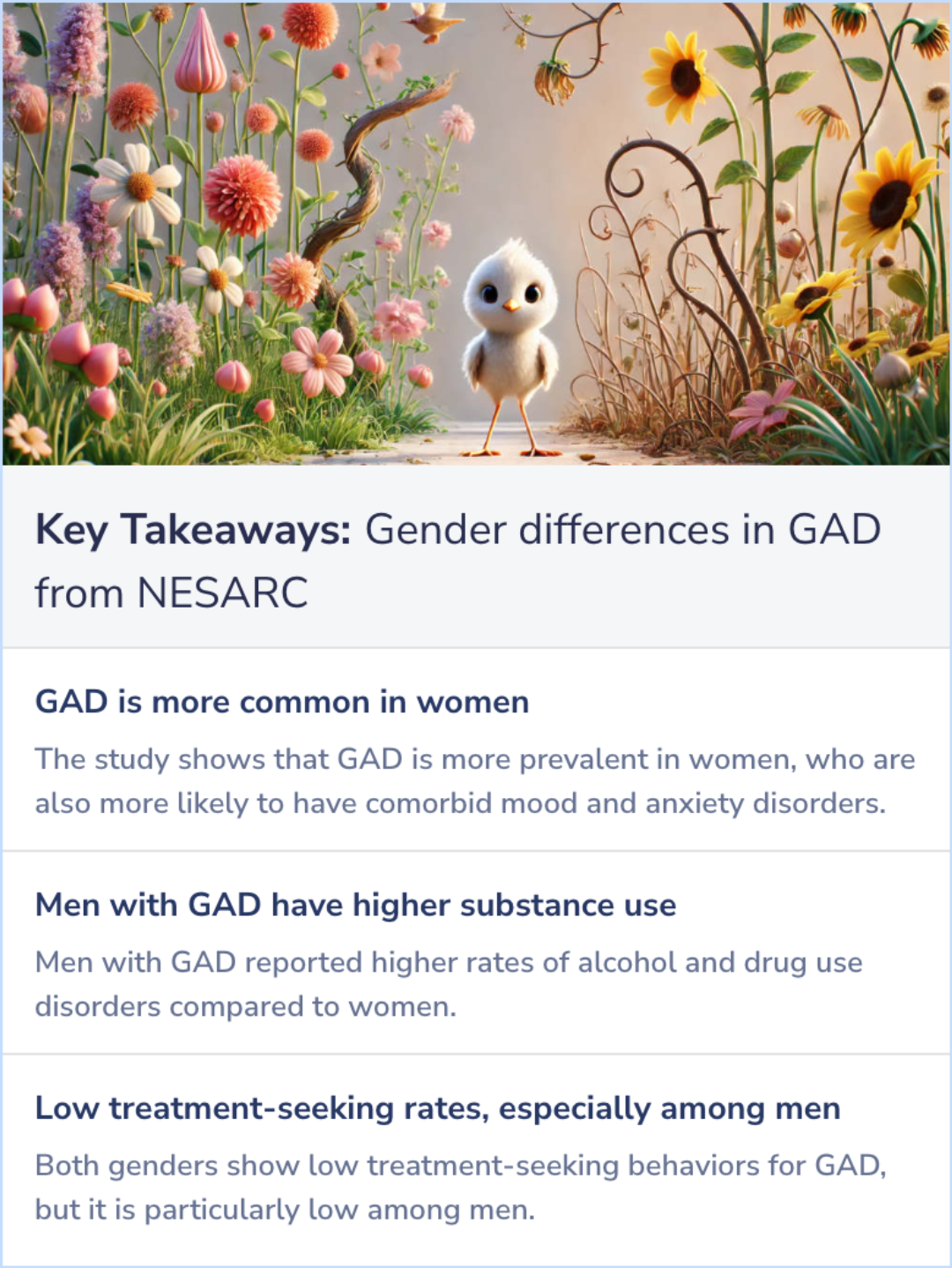
Background Information
Patient Guide
⚧️
GAD and Gender Differences
GAD manifests differently in men and women, influencing prevalence rates and symptom profiles.
🍺
Comorbidities in Men with GAD
Men with GAD frequently experience higher rates of comorbid alcohol, substance abuse, and nicotine dependence.
😞
Comorbidities in Women with GAD
Women with GAD often have higher rates of mood and anxiety disorders, excluding bipolar and social anxiety disorders.
🚫
Treatment Challenges by Gender
Treatment adherence varies, with men less likely to seek treatment for GAD compared to women.
🏠
Impact on Daily Life
Women with GAD often face greater disability, affecting their daily lives more than men with the disorder.
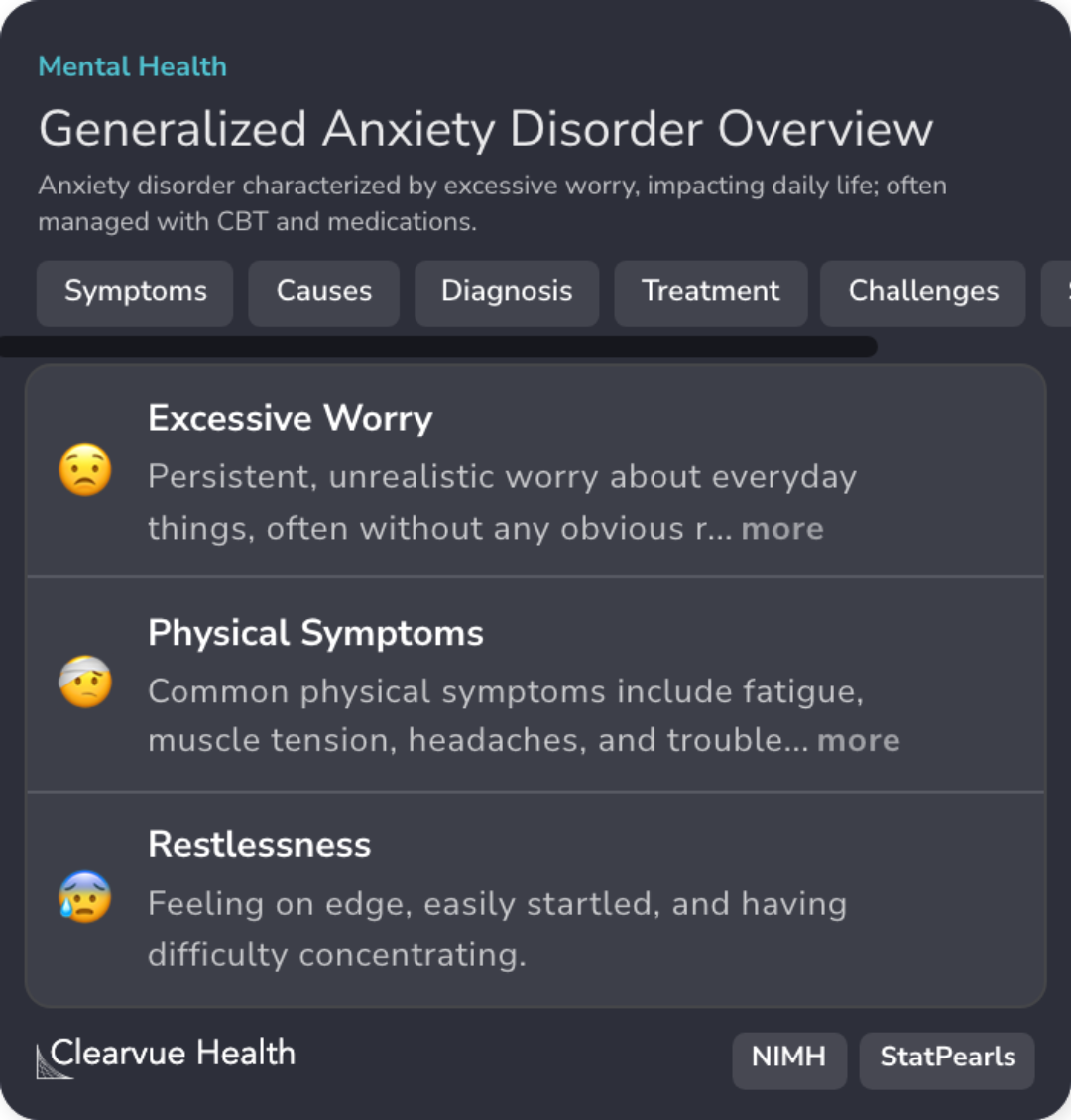
Professional Guide
Expert Opinion: Gender differences in GAD from NESARC
In line with the findings, generalized anxiety disorder (GAD) displays significant prevalence differences between genders.
The disorder is twice as common in females as it is in males.
Comorbidity with major depression or other anxiety disorders is commonly observed in GAD.
Selective serotonin reuptake inhibitors (SSRIs) and serotonin-norepinephrine reuptake inhibitors (SNRIs) are the preferred initial pharmacotherapy options for managing GAD.
Moreover, the choice of treatment is individualized based on severity and patient preferences.
The disorder is twice as common in females as it is in males.
Comorbidity with major depression or other anxiety disorders is commonly observed in GAD.
Selective serotonin reuptake inhibitors (SSRIs) and serotonin-norepinephrine reuptake inhibitors (SNRIs) are the preferred initial pharmacotherapy options for managing GAD.
Moreover, the choice of treatment is individualized based on severity and patient preferences.
Evidence Summary
Shifting Focus Away from Anxiety with Attention Modification
Attention modification techniques help individuals with Generalized Anxiety Disorder (GAD) by shifting their focus from worry and anxiety to more neutral or positive thoughts. This method improves daily functioning for those affected by GAD, a condition that involves excessive worrying.
By training people to redirect attention away from anxiety-provoking thoughts, attention modification promotes a more balanced and less stressful mental state.
By training people to redirect attention away from anxiety-provoking thoughts, attention modification promotes a more balanced and less stressful mental state.
Evidence Summary
How Anxiety Heightens ADHD Challenges
Anxiety often amplifies ADHD symptoms, making it harder to manage emotions and stay focused. Those with ADHD and anxiety may face unique challenges like test anxiety and struggle to control impulsivity or hyperactivity.
Both ADHD and anxiety can lead to strong emotional reactions, further complicating daily life. It’s common for individuals to experience a range of anxiety disorders, including generalized and social anxiety.
Both ADHD and anxiety can lead to strong emotional reactions, further complicating daily life. It’s common for individuals to experience a range of anxiety disorders, including generalized and social anxiety.
Evidence Summary
Stress and Relapse in GAD
Stressful events can increase the chances of relapse for people with GAD. Those who experience more significant stress are more vulnerable to relapsing. However, proper management and support systems can reduce the impact of stress on these relapses.
People with GAD who face higher stress levels have a higher chance of experiencing relapses, making support systems crucial in managing stress and its effects on relapse.
People with GAD who face higher stress levels have a higher chance of experiencing relapses, making support systems crucial in managing stress and its effects on relapse.
Evidence Summary
CBT vs Applied Relaxation: Tackling GAD from Two Angles
Cognitive Behavioral Therapy (CBT) works by changing the negative thoughts and behaviors that often lead to anxiety, aiming to break the cycle of worry and stress. In contrast, Applied Relaxation centers on teaching muscle relaxation techniques to manage anxiety symptoms.
Both approaches aim to reduce the impact of Generalized Anxiety Disorder (GAD), but they tackle the problem from different angles: CBT through thought patterns and Applied Relaxation through physical tension.
Both approaches aim to reduce the impact of Generalized Anxiety Disorder (GAD), but they tackle the problem from different angles: CBT through thought patterns and Applied Relaxation through physical tension.
